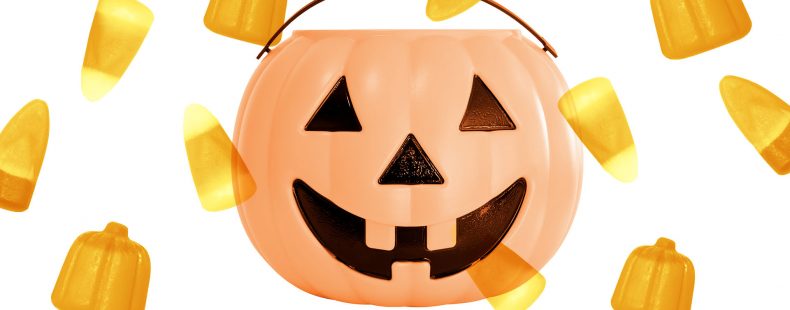Whether you love chocolate or hard candies, we all have our favorites. But, have you ever thought about what the name on your favorite candy wrapper means?
Here’s the history behind the names of a few popular confections.
Snickers
Believe it or not, one of the most beloved candy bars is named after a horse. The Mars family named the candy bar Snickers in memory of its favorite race horse. This bar was introduced in 1930.
Of course, to snicker means “to laugh in a half-suppressed, indecorous or disrespectful manner.” It relates to a Dutch word and is probably intended to mimic the sound of that distinctive laugh.
M&M’s
During the Spanish Civil War, Forrest Mars Sr. saw soldiers eating hard-shelled chocolates, inspiring the mass production of M&M’s about a decade later in a Newark factory.
The candy was named after the surnames of the company’s founders: Forrest Mars and William Murrie.
Milky Way
Another Mars product, the Milky Way bar was inspired by the malted milk drink, not Earth’s galaxy, the Milky Way.
The company’s intention was to put chocolate malted milk, which was very popular in the 1920s, into a candy bar.
Milk Duds
Here’s another milk-named morsel, but this one is a concoction of another leading candy maker: Hershey (who actually first made M&M’s and only acquired Milk Duds in the 1990s). The Hershey Company says that the original maker of Milk Duds couldn’t make these chocolate-covered caramels perfectly round. Disappointed, he called them duds.
A dud is “a device, person, or enterprise that proves to be a failure.” We think Milk Duds are far from that …
Is there any day more devoted to candy than Halloween? Learn the origin of the name Halloween here.
Mr. Goodbar
Mr. Goodbar, a chocolate bar studded with peanuts, is a true Hershey Company original.
According to Samuel Hinkle, who first formulated Mr. Goodbar, someone said “that’s a good bar” during product testing in 1925, but Milton Hershey (the company’s founder and namesake) misheard it as Mr. Goodbar. The rest is candy history.
Butterfinger
The Butterfinger is another chocolate-meets-peanut treat (in this case, peanut butter). This peanut butter helps us make sense of its name, which was chosen in a 1923 fan contest held by the Curtiss Candy Company.
Fun fact: in an early publicity stunt, the company dropped Butterfingers (as well as its Baby Ruth bars) from airplanes across US cities!
Reese’s Peanut Butter Cups
Speaking of peanut butter, we can’t forget this classic treat, which often tops the lists of favorite trick-or-treat candies each year. Dating back to the 1920s, this round patty in the orange wrapper is named after its creator, Harry Burnett (H.B.) Reese, a former Hershey employee and dairy farmer who also created his own candy company, the H. B. Reese Candy Company. In 1963, Hershey and Reese merged, not unlike the merging of chocolate and peanut butter in the candy cups … hmm, hmm.
Skittles
This popular fruit candy is also a fan fave–and a newer creation. It was first sold in the UK in 1974. The word skittles though is an old one, making an appearance in Charles Dickens’ Pickwick Papers (1837) as a reference to a popular pub game. That skittles was a variant of bowling that never caught on in US—though the candy sure did! Because the candy resembles a disk used to play skittles, fans do speculate that the game inspired the candy’s name, but it’s still a bit of a mystery.
Sour Patch Kids
If you remember the Cabbage Patch Kids dolls and the accompanying frenzy to acquire them, then congrats! You know where the name of this candy comes from. It’s riff on the one-of-a-kind soft dolls with yarn hair that debuted in 1982. But the Sour Patch Kids once had another name: Mars Men. The original candy (created in the 1970s by Canadian company Jaret International) was shaped like an alien and capitalized on a different craze altogether. But when they came to the US in 1985, the company changed their name.
Tootsie Rolls
Tootsie Rolls were the creation of Leo Hirshfield, an Austrian immigrant who had a small store in New York City in the late 1800s. He named the candy after his daughter Clara, who was nicknamed “Tootsie.”
Now, 64 million Tootsie Rolls are produced each day. And the word tootsie has come to possess both the wholesome sense of “sweetheart,” as well as the less savory connotation of “prostitute.”
Dum Dums
Dum Dums were first created in 1924 by the Akron Candy Company in Bellevue, Ohio. According to the Spangler company, which now makes these lollipops, an early sales manager named the candy Dum Dum because it was a word “any child could say.” (A dum-dum is “a silly, stupid person,” but we don’t think the manager was implying that about its customers!)
The ball-on-a-stick shape of Dum Dums also may allude to dumbbells in weightlifting.
As for what the “mystery” flavor is? That’s one origin we can’t … unwrap.
🍫Time for a sweet quiz
Now that you’ve learned the facts behind these candy names, dip into our short and sweet quiz! At least there are no cavities waiting at the end.














